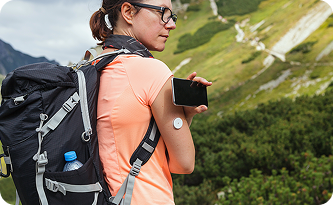Learn Your Way
to A Healthier Life
The Evolution of Multi-Pathogen Testing - test3

In just six years, testing for respiratory illnesses has undergone a significant transformation. What began as specialized laboratory tools confined to hospital settings has evolved into accessible, at-home diagnostic solutions that are reshaping preparedness for future pandemics worldwide.
Before 2020, testing for multiple respiratory viruses existed primarily in larger hospital laboratories and research facilities. Polymerase Chain Reaction (PCR) tests for more than one pathogen (panels) were capable of detecting 15-20 respiratory diseases—including various influenza strains, RSV and seasonal coronaviruses. These comprehensive molecular panels were largely inaccessible to point-of-care settings, including smaller hospitals and clinics and completely unavailable to consumers.
The COVID-19 Catalyst: Rapid Innovation Under Pressure
When COVID-19 emerged in 2020, healthcare systems around the world scrambled to diagnose and contain the virus. A 2022 retrospect from Microbiology Spectrum found that while efforts initially focused on developing single-pathogen PCR and antigen COVID-19 tests, clinicians found themselves treating patients who might have had COVID-19, influenza strains, RSV or 2-3 viruses at once.
This symptom overlap created urgent demand for tests that could differentiate pathogens from a single sample. Clinical laboratories began expanding the use of multiplex PCR panels to simultaneously detect SARS-CoV-2 alongside influenza A and B. These tests, which had once been limited to inpatient settings, became a vital tool in emergency departments, allowing healthcare providers to make faster, more informed decisions about treatment and isolation.
Two Testing Paths Emerge
From this urgency, two key approaches to multi-pathogen testing took shape: 1) highly sensitive molecular tests, such as multiplex PCR panels and 2) more accessible rapid antigen tests.
Multiplex PCR tests offered excellent accuracy and the ability to detect a wide range of viruses in one swab. By combining multiple targets into a single analysis, they reduced delays caused by sequential testing and enabled faster clinical interventions. A study from the Journal of Infection showed that this approach helped patients receive appropriate antiviral treatment more quickly and improved infection control by identifying co-infections early.
At the same time, rapid antigen tests were developed to meet the growing demand for quick, convenient diagnostics. These tests prioritized speed and ease-of-use, delivering results within 15 minutes. While slightly less sensitive than PCR, especially for detecting influenza viruses, their high specificity and simplicity made them ideal for use in community clinics, schools and homes.
Using Respiratory Illness Tests at Home
The widespread use of at-home COVID-19 tests during the pandemic marked a turning point in how people approach respiratory illness. Millions of households became familiar with self-testing, learning how to swab and interpret results. A major driver of this shift was the nationwide distribution of COVID-19 antigen tests, many of which were produced by iHealth. During the height of the pandemic, iHealth antigen tests were mass-mailed via a free COVID test program administered by the federal government to nearly every household in the United States.
This unprecedented access laid the foundation for a new era in personal health monitoring. As people grew more comfortable managing their symptoms from home, the demand grew for tests that could do more than detect just one virus. By 2023, multi-pathogen tests had started to reach consumers, offering the ability to check for COVID-19 as well as influenza A and B. Products in this new category of at-home multi-pathogen testing, among them the iHealth 3-in-1 antigen test, provided identification of those respiratory illnesses, empowering users to make faster decisions about seeking care, staying home from work or school and protecting others.
The Benefits of Multi-Pathogen Testing
Today, multi-pathogen testing is becoming increasingly the preferred solution for diagnosing respiratory illnesses. Rather than testing for a single virus and then trying another if results come back negative, a multi-pathogen approach offers a clearer picture from the start. This is especially important when symptoms overlap or when co-infections are possible.
Healthcare systems now recognize the benefits of early, accurate differentiation between respiratory viruses. Providers can make more targeted treatment decisions and isolate patients appropriately. For individuals, these tests provide peace of mind and reduce the guesswork that often accompanies seasonal illness. As respiratory viruses continue to circulate and evolve, having access to fast, reliable multi-pathogen testing—especially at home—will remain a key part of public health strategy.
References
- FDA - Evaluation of Automatic Class III Designation for Biofire Respiratory Panel 2.1
- Microbiology Spectrum - Multiplex PCR Detection of Respiratory Tract Infections in SARS-CoV-2-Negative Patients Admitted to the Emergency Department
- CDC - CDC Multiplex Assay Receives Authorization from FDA
- Journal of Infection - Rapid multiplex PCR for respiratory viruses reduces time to result and improves clinical care
- VeryWell Health - PCR vs. Rapid Test for COVID-19: Which Should You Take
- Johns Hopkins - In a post-covid world, there's a new landscape for at-home medical tests
- Cleveland Clinic Journal of Medicine - Laboratory testing for respiratory viruses for the clinician
- MDPI - Key Insights into Respiratory Virus Testing: Sensitivity and Clinical Implications
Sign Up For More From iHealth
Receive the Latest News and Special Offers


















